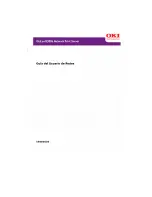
Diplomat jr Model jrN-ASV User Guide Issue No. 2 (03/01)
5
Introduction
Introduction
The Lucidata Diplomat model jrN is one of a family of simple connectivity
solutions built around Lucidata’s popular Diplomat jr product. The jrN
model has been designed specifically to interface to the most common
local area network (LAN) media utilising Ethernet technology and
employing the TCP/IP transport level protocols. Despite network
technology being rather complex, Lucidata has always sought to make
its products easy to use and user friendly. We believe that our products
should just be connected up and left to do their job with little on no
intervention necessary from the user.
To this end most Lucidata products are supplied with simple menu driven
configuration screens that can be accessed with any simple local ter-
minal or emulation. Remote configuration over the network is also pos-
sible but due to the inherent security implications of such a method it is
not the default method.
The model jrN runs the jrN-ASV firmware as standard and supports
interconnectivity between Ethernet and simple asynchronous serial de-
vices over an RS232 interface. It also has brothers and sisters that
offer RS422 (jrNV), synchronous (jrNS) and parallel (jrNP) interfaces
which run a variety of communications protocols
This manual is structured to require the minimum of reading to effec-
tively operate the
Diplomat jrN. If, as is our usual policy, Lucidata has
configured your unit for you, you will only need to read Chapter 2, Get-
ting Started Quickly, to discover what plugs into where and you will be
on the air.
If your unit is not configured yet you will need to read Chapter 3 on Con-
figuration to discover what information you need to get your hands on
before starting that process. If you are wondering why you bought a
Diplomat jrN then Chapter 4, Operation, is where we tell of all the things
that the jrN can do and how to drive it. You will probably want to read this
chapter anyway. Networks can be complex things and problems can
and do arise which may generate many and varied error messages,
some coming from within the
Diplomat jrN and others from outside but
reported to the interface. Chapter 5, Trouble Shooting and Error Mes-
sages, documents these and gives probable explanations and recom-
mended courses of action. Finally Chapter 6, Technical Specification,
contains the dry detail of the hardware so you know what pins to use.




































